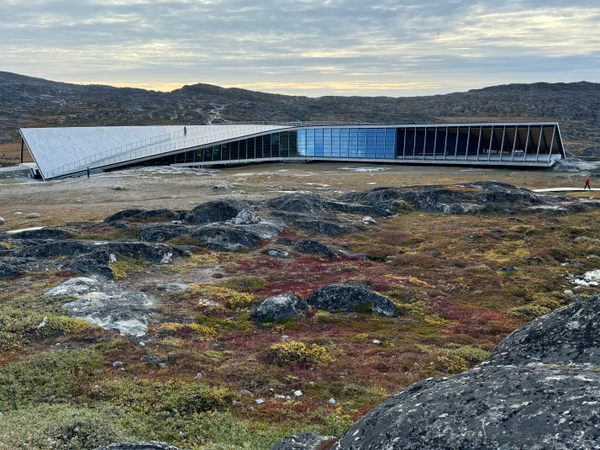The village of Ilulissat in West Greenland is known for the outstanding natural beauty of its UNESCO icefjord. It’s here that large icebergs break off from the Sermeq Kujalleq glacier after a journey of hundreds or even thousands of years from deep within Greenland’s icecap. A moraine under the water causes many of them to get stuck just off Ilulissat’s shore, creating a vast dreamscape for photographers.
Sermeq Kujalleq is one of the fastest and most active glaciers on the planet. If you were to melt the annual ice mass that calves from it, there would be enough water to provide for the USA’s yearly water consumption. Ilulissat’s icebergs have drifted as far as Bermuda, Ireland, and the Azores, and most people believe it was an iceberg from Ilulissat Icefjord that sunk the Titanic.
Tourists to Greenland know to prioritize Ilulissat for its landscape, but may be unaware of its cultural history. At the mouth of the icefjord is an important archaeological site called Sermermiut where evidence of ancient Saqqaq, Dorset, and Thule cultures prove that Inuit have been passing through the region for more than 4,000 years.
At the beautiful new Icefjord Center, a museum which opened in July 2021, visitors can learn more about the formation of icebergs and the significance of Sermermiut. An interactive screen shows where to look for earthworks, ruins, and graves, which will add context later when you’re walking down the wooden boardwalk from the Icefjord Center, through Sermermiut, and all the way to the most popular viewpoint overlooking the icefjord.
It’s here that you’ll arrive at Nakkaavik, “the place where people fall.” Legend says that elderly Inuit used to sacrifice themselves by jumping from the cliff at this location to make way for younger generations.
Inside the Icefjord Center is also a unique virtual reality setup that brings you on an underground (or under-ice) tour of the EGRIP Polar Ice Station, where scientists are studying ice cores.

